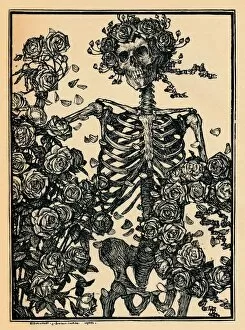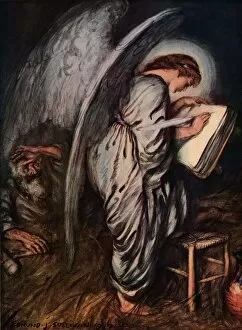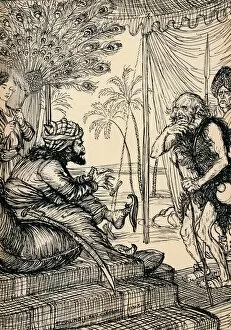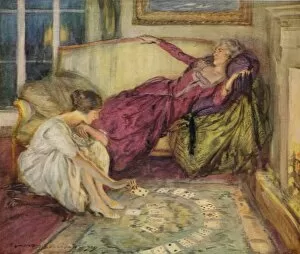Edmund Sullivan Collection
Edmund Joseph Sullivan, a renowned artist of the early 20th century, left an indelible mark on the world of illustration
All Professionally Made to Order for Quick Shipping
Edmund Joseph Sullivan, a renowned artist of the early 20th century, left an indelible mark on the world of illustration. With his exceptional talent and keen eye for detail, he brought to life some of literature's most iconic characters and scenes. In his Illustration for The Rubaiyat of Omar Khayyam from 1900, Sullivan masterfully captured the essence of Persian poetry through intricate brushstrokes and vibrant colors. His portrayal transported readers to a realm where beauty and philosophy intertwined. Another notable work by Sullivan was his Scene from The Strange Case of Dr Jekyll and Mr Hyde in 1927. Through haunting imagery, he depicted the duality within human nature, leaving viewers captivated by the inner struggle between good and evil. Sullivan's Pen Sketch from Line: An Art Study in 1923 showcased his versatility as an artist. In this piece featuring Don Quixote, he skillfully blended lines to create depth and movement, breathing life into Miguel de Cervantes' beloved character. But it wasn't just classic literature that inspired Sullivan; he also delved into spiritual themes with works like Abou Ben Adhem: - I Pray Thee Then Write Me As One Who Loves His Fellow Men in 1916. This poignant illustration portrayed love for humanity as a noble virtue worth cherishing. In And When The Angel Showed Him The Names Of Those Whom Love Of God Had Blest (1916), Sullivan explored divine blessings through delicate strokes that conveyed both grace and reverence. The Tavern Door (1916) presented a scene filled with intrigue as figures gathered around its entrance. With meticulous attention to detail, Sullivan invited viewers into this mysterious world full of hidden stories waiting to be discovered. Sullivan's artistry extended beyond illustrations; he also created captivating cartoons such as The Cartoonist - Stage VI (c1920). Through humor and wit, he shed light on the creative process, offering a glimpse into the mind of an artist.















